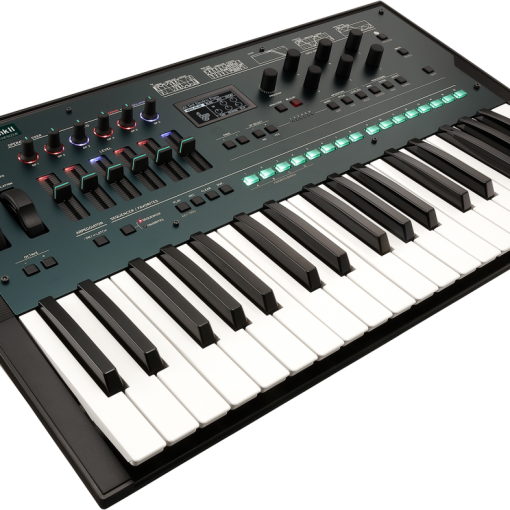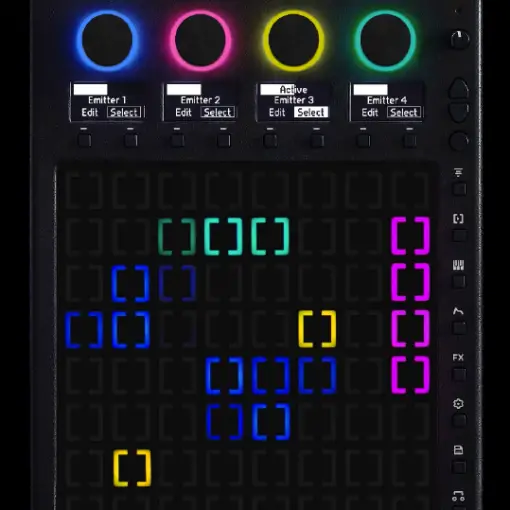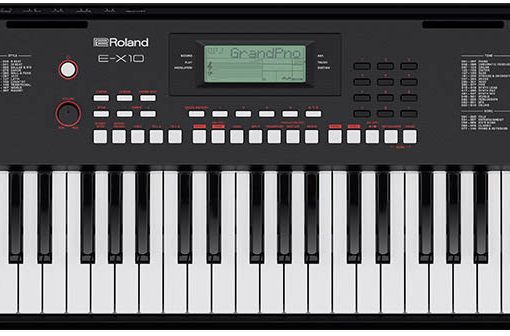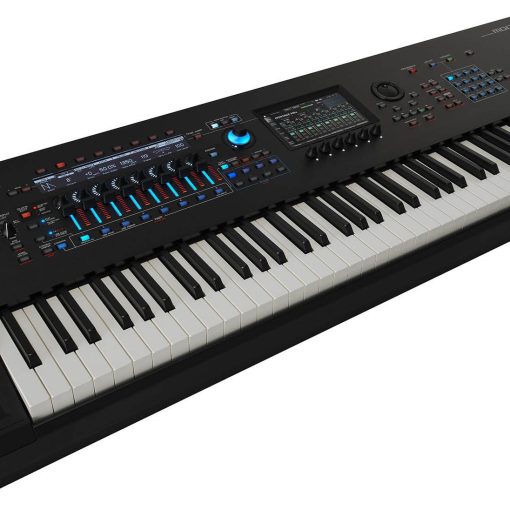 The Minod Vorga is a new analog synth (being released this month) “designed to offer a unique sound and an easy-to-use interface.”
The Minod Vorga is a new analog synth (being released this month) “designed to offer a unique sound and an easy-to-use interface.”
The official website describes the effort that has gone into designing a fast and easy interface with much reliance on the joystick.
The analog joystick by default controls pitch bend and modulation. But any other control can be assigned to it in any combination. For example, you can have filter cutoff frequency on the vertical axis and LFO frequency on the horizontal.
The joystick is also used to load and store patches and sequences and to select MIDI channels.
 The Vorga comes with brief instructions inscribed on the front panel, which is probably just as well as, although the website suggests that “you will master the interface after a few minutes of practice”, you might sometimes be wondering just which button to press to accomplish a particular effect.
The Vorga comes with brief instructions inscribed on the front panel, which is probably just as well as, although the website suggests that “you will master the interface after a few minutes of practice”, you might sometimes be wondering just which button to press to accomplish a particular effect.
It certainly looks the part, made from a choice of wood, and aluminium, but what can it do?
DCO (Digitally Controlled Oscillator):
The DCO is directly controlled by the MIDI unit. The timing of the waveforms is controlled by a quartz crystal but the waveform itself is generated by analog circuitry. The waveshaper has two outputs:
- variable width pulse waveform
- saw or hard synch waveform
The timbre knob controls both pulse width and synch slave frequency. The DCO/waveshaper also has the ability to glide, animate and to add vibrato to the sound.
 VCF (Voltage-Controlled Filter):
VCF (Voltage-Controlled Filter):
The MINOD® VORGA filter is the backbone of its original sound. It has two modes set by a switch: 24dB Low pass (4-pole) or 12dB Band pass (2×2-pole) with variable width, where both ends are 2-pole or 12dB/oct. The cutoff frequency and bandwidth can be varied independently. What makes the filter unique is the two resonance peaks, one on each side of the band pass filter. This creates timbres not available on traditional analog synths. The drive control helps too.
The filter has six parameters: cutoff, offset, resonance (dubbed Q in the schematic), drive, velocity, and envelope. The first controls the center frequency of the filter. The second controls the bandwidth. resonance sets the resonant response on both peaks. The drive controls the power driven into the filter and can give distortion effects. Velocity controls the MIDI velocity influence on the cutoff. Finally, envelope controls the amount of envelope influence on the cutoff frequencies.
LFO (Low Frequency Oscillator:
The LFO in the VORGA has one control for the Rate, or frequency. It goes from very slow into audio (well above 100Hz). It has a triangular or random waveform. It can be synched to MIDI.
Envelope Generator:
The envelope generator on the VORGA is the standard ADSR (attack time, decay time, sustain level and release time) found on most analog synthesizers. It controls the VCA output driving the filter, can influence the waveform via the animation control, and influences the filter cutoff frequency of the filer via the envelope knob. The VCA level is also influenced by MIDI velocity, as controlled by the accent control.
Sequencer:
The built in sequencer works like an analog sequencer. You set the notes by turning the knobs. Velocity can be edited for each note. Notes can be turned off or joined to the previous one. The note length can be set from very short to overlapping, to allow glide effctes. The sequence length can be set to 6 or 8, in 16ths or 8ths, straight or swing. The sequence can be transposed by an external MIDI keyboard, the internal keys or using the joystick.
The joystick keeps its setting when going into sequence mode, so assigned sound patch controls can be accessed during sequence mode.
MIDI:
The MINOD® VORGA supports a full MIDI interface. It can function as a master sequencer, be used as a general controller or playback an external sequence track. All parameters can be controlled at any time via MIDI.
Using SYSEX commands, patches and sequences can be uploaded to a computer and stored for later use. The firmware can also be upgraded via MIDI as bug fixes and new features comes along.
This is a pretty cool looking and sounding synth, that may well feature best as part of a bigger setup. Keyboard-heads like me might struggle with it on its own, though it obviously has potential as the demo MP3s on the site suggest.
Visit Minod Vorga site (via Synthtopia)




